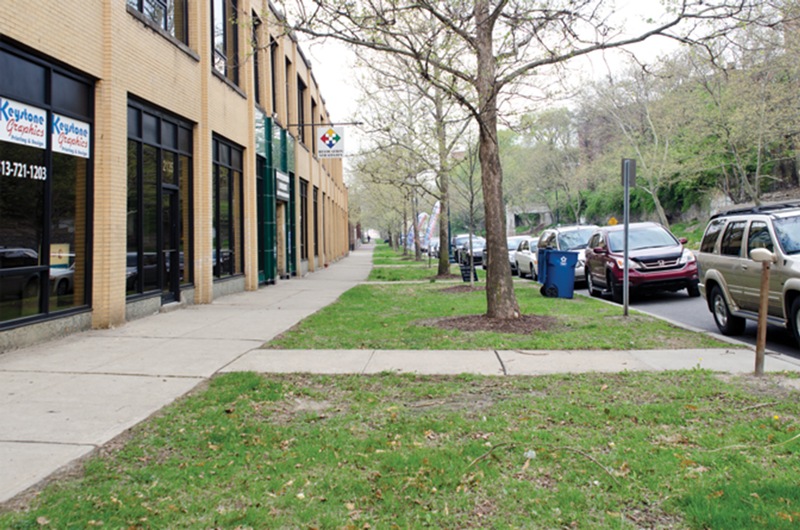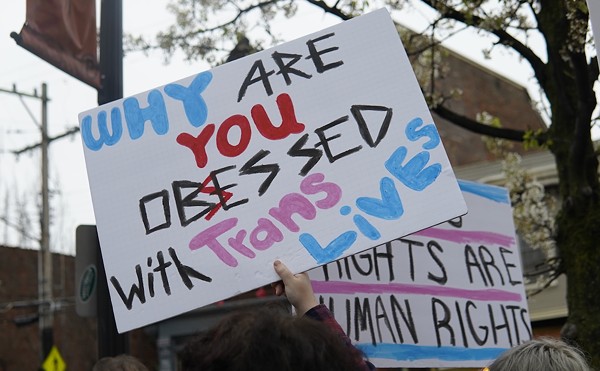T
he city’s cost of a long-planned piece of cycling infrastructure could more than double if City Council approves a motion Vice Mayor David Mann planned to introduce on April 23.
Mayor John Cranley successfully paused the Central Parkway Bikeway Project for public discourse in response to a handful of business owners and residents taking exception to it, and a spokesman for Mann shared his suggested compromise with CityBeat today.
In response to an April 21 special Neighborhoods Committee meeting, Mann seeks to alter the bike route to appease people who don’t want to see parking spaces removed, but the updated plan will cost an additional $110,00 on top of the $82,600 the city would pay under the original plan, which would create the beginning of a cycling corridor running from Elm Street downtown to Ludlow Avenue in Clifton. The project was supposed to break ground next month and could lose $330,400 in federal money if the contract isn’t awarded by May 1.
“We routinely spend hundreds of thousands of dollars as a city to create new jobs in our community,” Mann said in a statement. “We should not approve a new project that places 60 newly created jobs in jeopardy when such a sensible accommodation is available.”
The planned bikeway is an innovative piece of cycling infrastructure meant to better protect cyclists along a critical thoroughfare that would connect a number of inner-city neighborhoods and business districts. The lane will be protected, meaning cyclists will have their own lane with a buffer separating them from traffic; in some areas plastic bollards will separate the bike and automobile lanes. The street will not be widened, so traffic lanes will be impacted through restriping, and parking will be restricted during peak traffic hours in the morning and evening.
Opponents of the project are concerned about losing public, on-street parking for parts of the day as well as potentially encountering traffic issues from shaving lanes from Brighton Place to Liberty Street. They also worry the bollards will become a blight issue and emergency vehicles will be impeded during one-lane hours.
Mann’s motion supports an alternative plan for a section running from Ravine Street to Brighton Place that would preserve 23 parking spaces full-time, alter 4,300 square feet of greenspace and remove 15 trees at an estimated cost of $110,000. The parking spaces would benefit a building owner and his tenants at 2145 Central Parkway.
City Councilman Chris Seelbach and others demonstrated frustration with the administration’s interest in stepping in at the 11th hour.
“I think we have reached a new era in Cincinnati: two steps forward, pause, lots of long meetings, two steps forward, and I’m convinced after the pause and lots of long meetings, we will continue to go two steps forward today,” Seelbach said at the April 21 meeting.
Mayor Cranley requested City Manager Scott Stiles delay awarding a contract after meeting with local business owner Tim Haines, who purchased a vacant building located at 2145 Central Parkway in 2012 for $230,000. His building now houses 65 employees from 12 different businesses including his own, Relocation Strategies. Haines has become a mouthpiece for the opposition to the bikeway — though he adamantly states he is not against the lane; he is just against the project’s current incarnation as it affects Central Parkway near his business, which utilizes 500 feet of on-street, unmetered parking, which translates to 30 parking spaces.
“If parking wasn’t an issue, I would open up my arms and welcome the bike path,” Haines says. “Parking for my 65 tenants is in jeopardy. As a business owner I have to fight for my tenants. … Could they park and walk a quarter of a mile? They could, but that’s not what they signed up for when they moved in.”
Haines has a 16-space parking lot adjacent to his building that some of his tenants use and also owns a parking lot across the street that is in disrepair. Haines says he already cleared it of underbrush to cut down criminal activity and disposed of dozens of tires and beer bottles. He says it would cost up to $300,000 to upgrade the lot.
During the April 21 presentation, Department of Transportation and Engineering (DOTE) Director Michael Moore presented the committee with an alternative recently developed with Cranley’s office that he said would appease Haines and his tenants but would cost more money. Moore pushed the notion that the alternative creates a more balanced bikeway plan.
The original plan, passed by council last year, restricts parking in front of Haines’ building from 7 a.m. to 9 a.m. Moore’s alternative, which Mann is on board with, is to ramp the bike lane over the curb adjacent to a sidewalk where there is currently a tree-lined area in front of Haines’ building and another business in order to preserve public parking full-time.
At the meeting, council member Young took exception to the suggestion of changing the project at this point.
“For the life of me, I don’t see where the reasonableness and the balance is with people who come so far after the fact that want us to make these changes and the dollar amount it’s going to cost the taxpayers to get it done,” Young said. “I am appalled that people can come after the fact and tie up all these people down here to simply want accommodations for them.”
Mann shared another perspective.
“There’s a gentleman who has brought 60 jobs to the city, including some folks who have Parkinson’s and use the building, and the proposal that’s being made seems to me to represent balance,” Mann said. “We spend millions of dollars, typically, to support development, to support jobs, and you’re saying that the proposal that was originally approved by this council without a hearing like this is so pristine that it cant be adjusted in any way, and if it’s adjusted that is a statement of imbalance? I just don’t follow that.”
For the past year and a half, DOTE conducted surveys, sought public input and developed plans for the bikeway. After a strong consensus, the department chose the protected bikeway plan. The bikeway is estimated to add just three seconds of motorist commute time by 2030, though some naysayers suggest that delivery trucks will clog the lanes and the turn left from Ravine Street will create an even longer lag.
Community outreach for the design began in March of last year with eight community council meetings. Letters were mailed to residents, businesses and property owners, but Haines and several other business owners stated they didn’t receive any and weren’t aware of the project until late last year.
A website designed for public feedback also garnered about 600 messages mainly supporting the bikeway project. DOTE held an open house last September and the Over-The-Rhine and Northside community councils, Findlay Market and Northside Business Association endorsed the project.
Simpson expressed frustration with halting progress for a last-minute meeting.
“I don’t think that’s an appropriate process,” she said. “Really, technically you can go over everything over the past two years. The reality is we need to look forward. If we want to be less auto-focused and more focused on other types of transit, we’re going to have to ruffle a couple of feathers.”
Supporters — some who biked to the April 21 meeting and utilized a bike valet setup in front of City Hall — represented various groups of the community from health and community councils to business owners and cyclists. Their number doubled opponents — mainly business owners along Central Parkway in the West End and the West End Community Council, though some West End residents and business owners supported the original bikeway plan.






